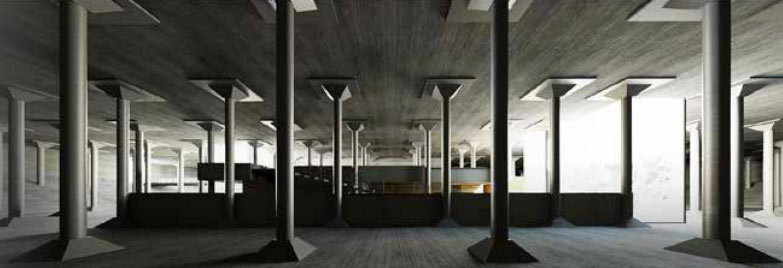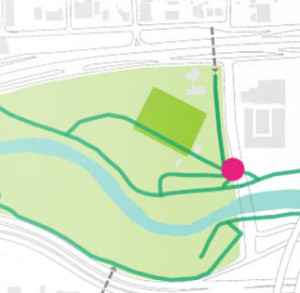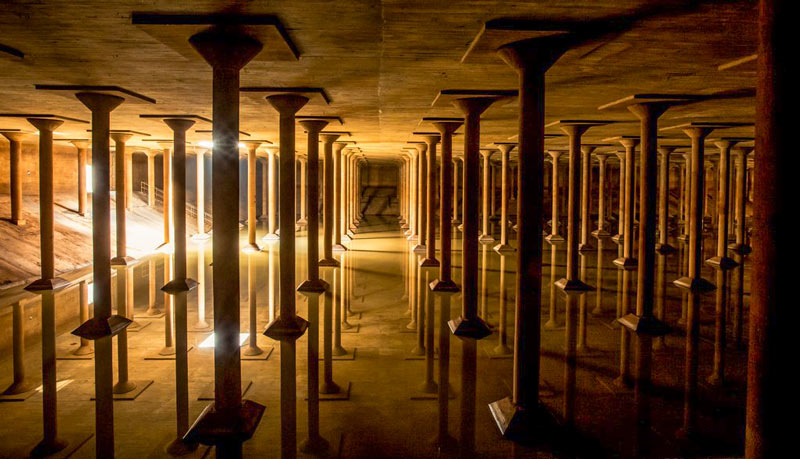
 As Buffalo Bayou Partnership continues to seek out tour guides for the cavernous 1927 city water reservoir and maybe-future-art-space buried in Buffalo Bayou Park, University of Houston architecture grad Sheridan Staats sends over her design for turning the structure into a split-level public bath house, complete with pools, saunas, gardens, a bike trail connection, and a cafe. Renderings and schematics are showcased in Staats’s undergraduate thesis, which also dives into global bath house and infrastructure history and the case for reusing the site in a way that nods to its utilitarian aquatic past.
As Buffalo Bayou Partnership continues to seek out tour guides for the cavernous 1927 city water reservoir and maybe-future-art-space buried in Buffalo Bayou Park, University of Houston architecture grad Sheridan Staats sends over her design for turning the structure into a split-level public bath house, complete with pools, saunas, gardens, a bike trail connection, and a cafe. Renderings and schematics are showcased in Staats’s undergraduate thesis, which also dives into global bath house and infrastructure history and the case for reusing the site in a way that nods to its utilitarian aquatic past.
The kelley green box on the map above shows the cistern’s buried footprint on the north shore of Buffalo Bayou (in blue), just west of Sabine St. and south of Memorial Dr.; the darker green line passing through the southwest edge of the cistern shows a plan to run the bayou’s bike trail into the cistern and onto a suspended causeway:


